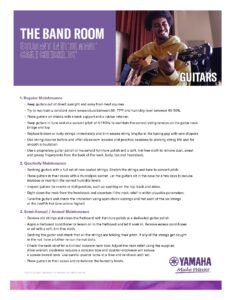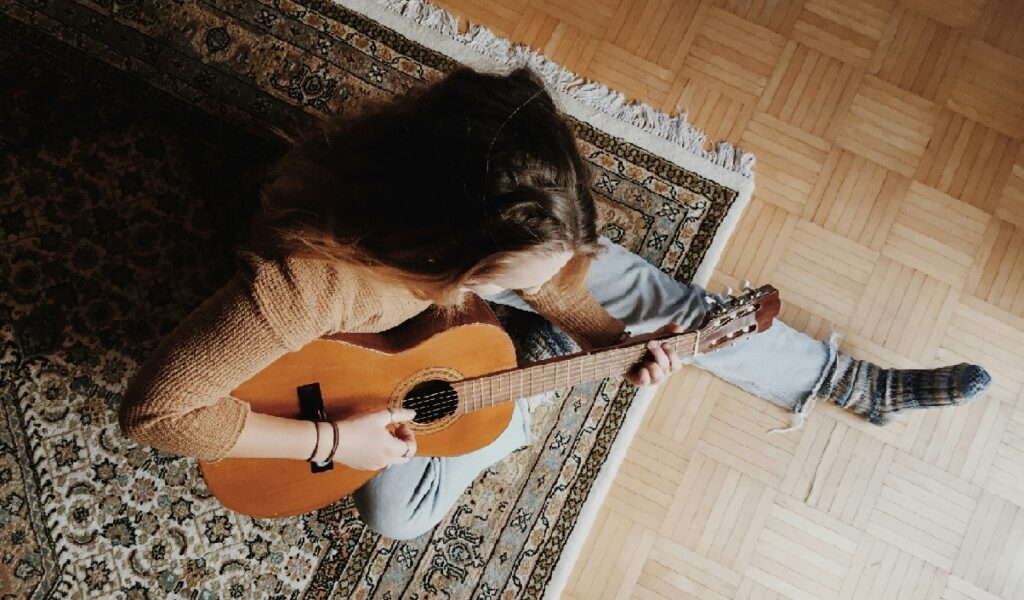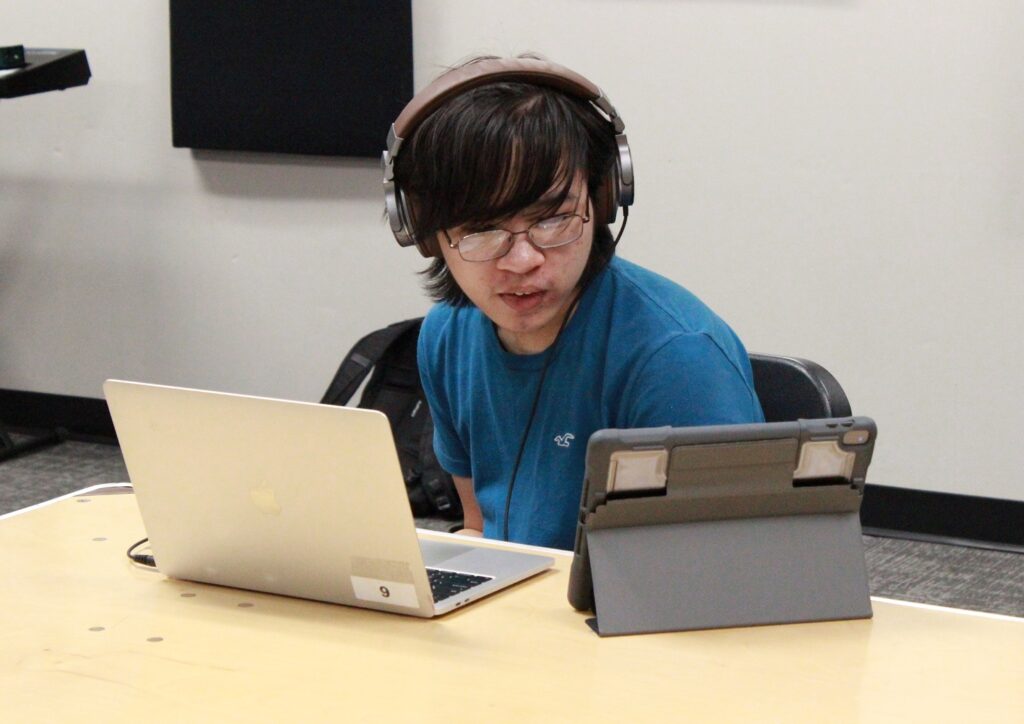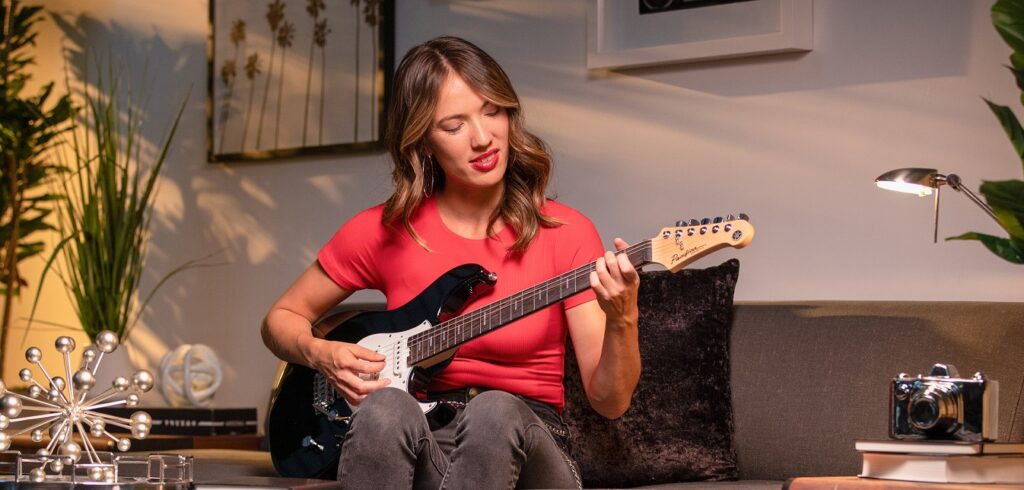Start a Guitar Program
A guitar program will provide a musical opportunity to students who would not usually join traditional band, orchestra or choir.
Guitar is one of the most ubiquitous instruments in the world. Chances are there are guitar players in your school and there are definitely students who want to learn guitar. The type of student who is interested in guitar is not usually in the traditional band, choir and orchestra program. They are their own breed; they are guitar players.
Starting a guitar program is a great way to provide a musical opportunity to students who would not usually receive it while broadening their experience and enriching the music department at your school.
In this article we will explore different ways to start a program at your school.
Start with the End in Mind
There are multiple pathways that can be taken to start a guitar program, but the best place to start is to figure out what aligns with your personal educational philosophy and what addresses the needs of the students in your school.
In addition to choosing a pathway, it’s important to consider what type of instruction you want in your classroom. Do you prefer direct instruction, flipped learning, asynchronous or a combination? Some methods are more tailored to specific types of instruction than others. These are the four main categories of guitar pedagogy that are used in schools.

Download this Yamaha Guitar Care Checklist for Students now!
Classical ensemble: A classical guitar ensemble is run like a band or orchestra. There are multiple players assigned to different parts, and they play in large or small ensembles. Here are some resources that will help with the planning and implementation of a classical guitar ensemble program:
Modern band: The modern band movement is fairly recent and it focuses on the study and performance of student-selected songs. In most modern band programs, rhythm section instruments (bass, guitar, drums and keyboards) are taught at the same time where students are put into bands. Here are some resources to help with starting a modern band program:
- Music Will (formerly Little Kids Rock)
- Modern Band Method
Method Books: The method book style of instruction is similar to beginning orchestra or band. There is a sequenced book for student that scaffolds individual and ensemble playing. Depending on the publication, these examples might be bespoke exercises or licensed music that the student will know:
Hybrid: I choose to combine elements of the above teaching methods to create a comprehensive system that develops the whole guitar player. It is called Fretboard Fundamentals and is available for free through ShedtheMusic. It combines the student choice and enjoyment of playing guitar in a group like modern band while teaching notes on the neck, improvisation, composition and chord theory. This method is student-centered and project-based with video walkthroughs, project prompts, embedded interactive scores and fillable PDF worksheets, making it great for direct instruction and/or flipped learning.
THE YAMAHA EDUCATOR NEWSLETTER: Join to receive a round-up of our latest articles and programs!
Getting the Ball Rolling
After you have selected the track that aligns best with you, the next step is to garner interest from the student body, start a club and/or propose a class to the administration. Remember, there are guitar players at your school, and if they were anything like me in high school, they would love to have a class to get better playing their instrument. In order to get these students on board and to figure out what they are interested in, you need to find them.
Here are some strategies that I’ve have successfully used in getting the word out. Find some guitar players in the band, choir or orchestra and have them play in a place at school where there is a lot of foot traffic (for example, the school entrance or the cafeteria). Following these performances, send out a call for a jam hosted at the school. Put the jam in the announcements and post flyers all over school. Ask students to create a post on social media. Set up the jam to be as cool as possible: have snacks, set the mood with lighting, have backline (drums, bass amp, guitar amp, PA) and supply instruments. Be open to anything during the jam and observe. Finally, provide a method of communication after the event, have them sign up with their name and email or have them join a Remind. Turn your jam session into a regular club and offer performance opportunities. While working with these students, test out elements from the different methodologies that you considered and get their feedback.
It is possible to go straight to the administration and propose starting a guitar class, but it helps to get students excited about it first. Either way, the administration will require data, so poll students in and outside of the music department about taking the class. Look at music programs at surrounding schools and make note of what types of guitar classes they offer. Figure out what your short-, mid- and long-term goals are with the program and how it will fit within the current music department. If you have created a club, gather data about the students in the club: what activities are they in, are they in the current music program, do they get in trouble a lot, what are their grades like? It also helps to have an artifact from the guitar club to bring to the administration: if you had a performance, share a video recording of it or invite admin to one. If you lay out an easy-to-follow plan for the administration that is well thought out and is in the best interest of the students and the school, it will be difficult for them to say no.
Where to Get Instruments
It is much easier to source guitars than most other instruments because they are relatively inexpensive and most students already have one in the family. If you do not have a budget, ask staff, students and the community for guitar donations. You will be surprised at how many instruments you can get this way. You can supplement these instruments with guitars that students already have at home. Host a fundraiser with your guitar club and/or set up a Donors Choose for the program. Once you grow the program, you will want to ask the administration for a budget. You should plan on eventually getting a full class set of instruments that are high quality that are all similar.
Once you are ready to make a purchase, the best place to go is your local guitar shop. Not only will they be able to work with you to provide high quality instruments for your program at a good price, a local guitar shop will be able to help with repairs and storage of the instruments. It is also possible to provide a discounted rate for gear from a local shop to your students if you create a relationship with them. Not only will a local guitar shop help with the purchasing and maintenance of new gear, they will be able to help assess and repair donated or existing instruments that the school may already have. A Sound Education in Brookfield IL is the local guitar shop that I use for my school. They have helped the school out in so many ways and they give my students a great deal on new and used instruments.
What Type of Guitar to Get
There are many different types of guitars and each can be used in different scenarios. The majority of instruments that students are familiar with and/or have at home either are steel string acoustic or electric guitars. While these instruments are great for specific uses, I find that a classical guitar is the best for beginners. These guitars are traditionally played fingerstyle, but they also work a pick which will adapt them to most playing styles. The strings are nylon and slightly farther apart than acoustic and electric guitars, making it easier for less experienced hands to get a successful sound. You want students to feel good about sounding good from the beginning! If you are limited to steel string acoustic guitars, you can have them restrung with ball-end nylon strings. These strings have the same benefit of classical guitar strings, but will work on acoustic guitar.
 My favorite classical guitar for a beginner is the Yamaha CG122MSH. It has a solid top, and sounds/plays like a much higher priced instrument. A close second would be the Yamaha C40II classical guitar. They are a budget model that will stand up to the daily wear and tear that the instruments will encounter. If you want to give students an authentic experience playing guitar in a pop context, they need to be able to play electric guitars. For electric guitars, I recommend as much of a Yamaha Pacifica or Revstar as you can afford. The quality of these instruments is second to none for the price point, and they will give your students a positive playing experience. It’s good to have at least one bass in the stable, and I recommend a Yamaha BB series. They are very versatile and can be used in everything from a jazz band to a pop punk combo. Get quality amps to use with your electric and bass guitars.
My favorite classical guitar for a beginner is the Yamaha CG122MSH. It has a solid top, and sounds/plays like a much higher priced instrument. A close second would be the Yamaha C40II classical guitar. They are a budget model that will stand up to the daily wear and tear that the instruments will encounter. If you want to give students an authentic experience playing guitar in a pop context, they need to be able to play electric guitars. For electric guitars, I recommend as much of a Yamaha Pacifica or Revstar as you can afford. The quality of these instruments is second to none for the price point, and they will give your students a positive playing experience. It’s good to have at least one bass in the stable, and I recommend a Yamaha BB series. They are very versatile and can be used in everything from a jazz band to a pop punk combo. Get quality amps to use with your electric and bass guitars.
Where to Store Instruments
Once you have instruments in the room, where will they be stored? Acoustic guitars are easily damaged and there are a few things you can do to keep them in good condition to make them last a long time. The most important thing you can do is to provide a simple to follow pathways for students to get guitars during class and put them away that keeps them out of the way from movement within the classroom. I tend to avoid single stands like these because they are easy to trip on. Wall hooks are nice and the ones by Hercules have a locking mechanism that will keep the instrument in place once it has been put in the holder. Hercules also makes a great multi-guitar rack that can be adjusted for different types of guitars. My favorite classroom solution for guitar storage are the classroom guitar racks from guitarstorage.com. They offer a great way to store instruments in the room, but they can roll to different locations in the school.
If you plan on bringing the guitars out of the guitar class, there needs to be a way to safely transport them. All of the guitars should have rigid gig bags or hard-shell cases. Try to avoid super budget gig bags that can be found on Amazon, these will not protect the instrument from most impacts. Yamaha CG-SC soft-case gig bags are amazing for classical guitars because they have backpack straps, are rigid, and they have a pocket at the front to carry music and accessories.
____________________________________________________
Starting a guitar program is a very exciting time for you and your students. In order to personally prepare for it, start playing guitar. Find a private guitar instructor and start taking lessons, access some of the method materials that are outlined in the first section of this article and begin working through the material yourself. Play along to the music that you like, write some tunes, start a band, and most importantly- have fun sounding good!















